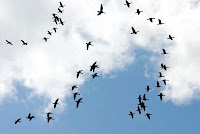 |
| one elephant (two Homo sapiens in car) |
 |
| Etruscan pygmy shrew |
So, here I am, a human being caught on a mid-range between big and small. That would have been the dilemma for all hominid species (even if they had been around at the time of dinosaurs, some of which would have pressed up against that upper body-weight limit even more forcefully). It seems to me, however, that the greater limits most of us humans face are not ones of body size. Instead they are limits involving abilities, wants, and hopes. It is is in that sphere that the weight of heavy experiences in life can sometimes nearly crush us.
On the other hand, even while we recognize physical and environmental limits, it would not be good to set our hopes too low when we yearn for the good. There is something about our human psychology that causes us to be sustained by visions of something greater than what we can usually accomplish. As the 19th-century poet Robert Browning metaphorically put it,
"...a man's reach should exceed his grasp,
Or what's a heaven for?"
~~~
Is there a good you yearn for, even though you know you may never see it completely?
(The Browning quote is from Andrea del Sarto [1855], l. 97.)
(The Medawar quotes are from The Limits of Science by P. B. Medawar. © 1984. [emphasis added] pp. 69 & 102.)
(The Medawar quotes are from The Limits of Science by P. B. Medawar. © 1984. [emphasis added] pp. 69 & 102.)
(Photo of shrew is by Trebol-a and is used under a Creative Commons Attribution-Share Alike 3.0 Unported license.)

